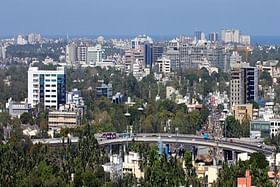Snapshot
In order to achieve productive outcomes from public consultations, there is a need to re-evaluate current practices.
The focus should be on reaching as many sections of the population, as possible, and fostering a conducive dialogue.
The Chennai Metropolitan Development Authority (CMDA) is conducting public consultation for preparing the vision document for the third masterplan, for the city.
The masterplan will likely be notified by December 2025 or April 2026.
The 20-year vision document for the master plan seeks to progress through a participatory approach which will envisage holistic, environmentally sustainable, economically vibrant and inclusive development in Chennai Metropolitan Area (CMA).
The meetings aim to engage with the city population, for their inputs. It is reported that three visioning workshops will be undertaken, after which the draft will be finalised for the urban restructuring of Chennai.
A city master plan is a blueprint that guides the future growth and development of a city. It encompasses various elements such as land use zoning, buildings, civic infrastructure, transportation, and social settings.
The process of creating a master plan includes analysis and proposals based on the unique characteristics of the region.
Different Indian cities have different master plans based on parameters such as demographics, current built environment, planning, geography, time frame etc.
In 2020-2021, the Delhi Development Authority (DDA) also implemented a similar consultation process with the preparation the Draft Masterplan of Delhi 2041 (MPD 2041).
The DDA announced public consultations and invited citizens to send inputs through different mediums. The agency launched a portal namely, ‘Public Engagement Portal for MPD-2041’ to share information about the consultation process and held online public meetings with specific groups of people in the city.
As claimed by the authorities, the process saw widespread participation. However, many groups and communities stated disparities in their ability to access and engage in the consultations.
Authorities use public consultations to gather opinions and insights from citizens on planning, policy, and development. However, setting the context through the recent consultations on city masterplans, these meetings are often contentious.
The Objectives Through The Consultations
One, these meetings provide an opportunity for multiple stakeholders to participate and engage in the planning process.
These engagements allow for a better understanding of the people and communities, who will be affected by the proposals, and gather information about the local conditions.
Two, the public consultations support the making of a democratic process for such large-scale projects.
Bringing a bottom-up approach, it may empower the local level bodies and its relations with the citizens for smoother execution.
The data collected from these consultations can then be used to support and improve the planning process.
Three, it promotes awareness amongst the citizens about the development that is being planned for the long-term future, related to infrastructure, land use and services. This can allow citizens to engage with planning and take advantage of the opportunities introduced through the plan.
Four, the meetings give scope for revisions and amendments in the proposal, to reflect the public concerns and interests. The process may lead to informed acceptance and help create positive perceptions of the proposal, among the public.
Drawbacks Of These Meetings
On the flipside, the methodology and practice of consultations in Indian cities have shown various drawbacks in the process of developing city masterplans.
One, these exercises are often limited in scope, however, the issues of the public can be vast and become complicated with lack of directives and information.
The consultations are often unable to effectively engage with the different communities and populations that make up the cities.
In the case of the Chennai masterplan, the citizens’ survey has not been accessible to many people. Furthermore, the consultation meetings were not inclusive of all sections of the city.
Similarly, during the Delhi masterplan consultations, many sections of the population remained unaware about the whole system. Active social groups had to take initiatives to engage these sections of the population.
Two, due to government involvement in these large-scale projects, these consultations become platforms for organised opposition through political opponents. The people show resentment to the project development and oppose any kind of initiatives on principle. Others may demand unreasonable and speculative requests.
Three, major infrastructure projects, city masterplans and policy initiatives are intended to open economic opportunities and promote social growth.
These affects different people and communities in a range of ways. Communicating these changes and complex issues to a large number of people, often go in different directions, as perceptions about the project vary among individuals.
Four, this heterogeneity in opinions and disagreements also reduces the pace of further progress. Additionally, new ideas and agendas are often discouraged due to a lack of technical expertise, forced with opinions to benefit individual communities.
In order to achieve productive outcomes from public consultations, there is a need to re-evaluate current practices. The focus should be on reaching as many sections of the population, as possible, and fostering productive dialogue that lead to better outcomes for both citizens and authorities.


